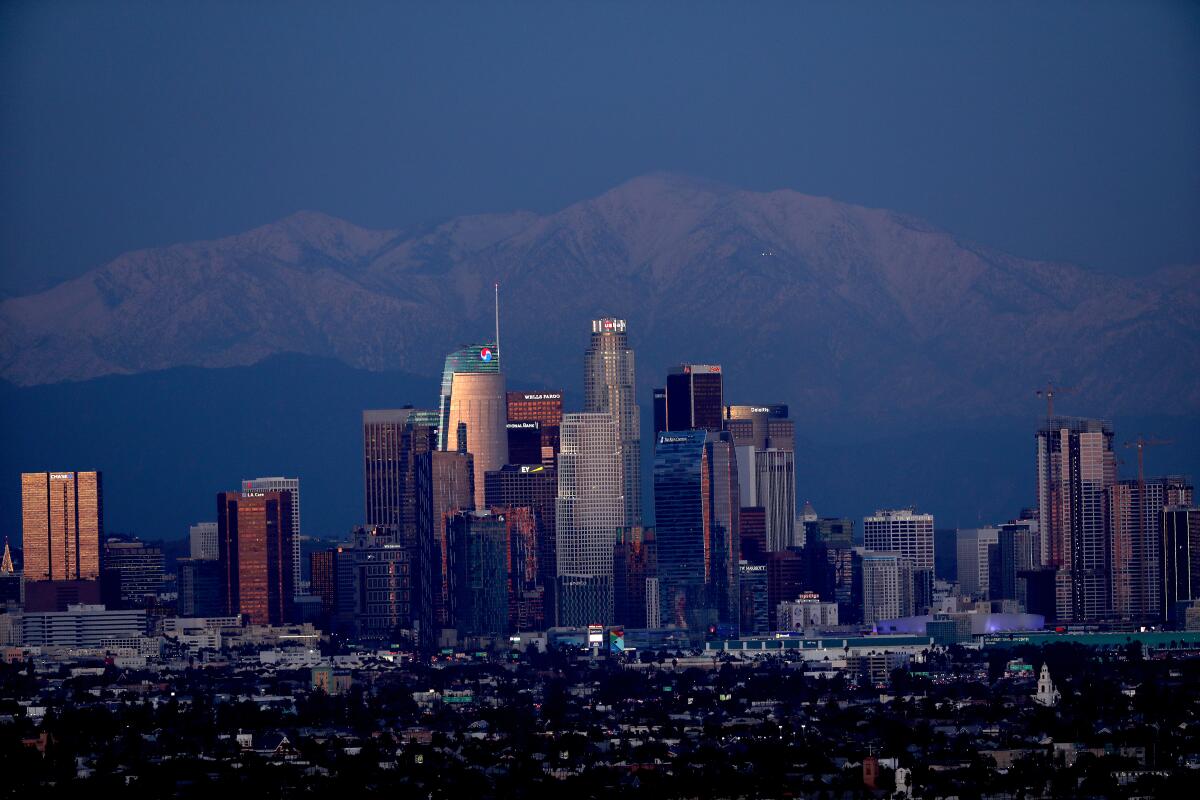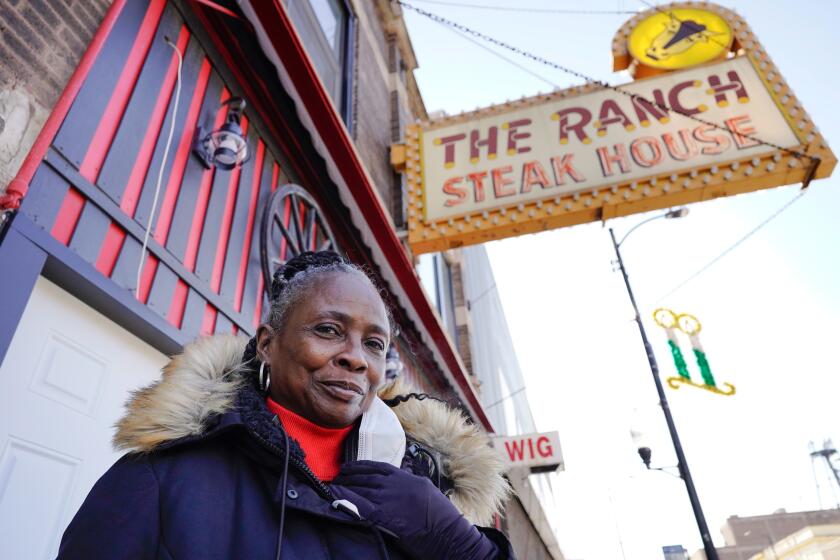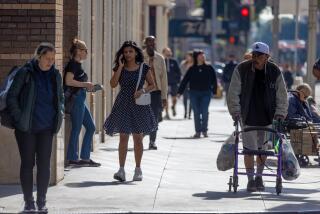L.A. and other big U.S. cities all lost residents in the pandemic’s first year

- Share via
After returning to the San Francisco metropolitan area following a college football career, Anthony Giusti felt like his hometown was passing him by. The high cost of living, driven by a constantly transforming tech industry, ensured that, even with two jobs, he would never save enough money to buy a house.
So he started looking elsewhere, settling last year on Houston.
“In Houston, I can be a blue-collar entrepreneur. With the Houston housing market, it made sense to come here,” said Giusti, who started a house-painting business.
Giusti was one of tens of thousands of residents who moved away from some of the nation’s biggest, most densely populated and costly metropolitan areas in favor of Sunbelt destinations during the first full year of the pandemic, from mid-2020 to mid-2021, according to new data released Thursday by the U.S. Census Bureau.
The pandemic intensified population trends of migration to the South and West, as well as a slowdown in growth in the biggest cities in the U.S.
The exodus from the biggest U.S. metropolitan areas was led by New York, which lost almost 328,000 residents. It was driven by people leaving for elsewhere, even though the metro area gained new residents from abroad and births outpaced deaths.
For decades, Black residents have been moving out of some of the nation’s largest cities into the suburbs, a trend the 2020 census found continues.
Metropolitan Los Angeles lost almost 176,000 residents, the San Francisco area saw a loss of more than 116,000 residents and greater Chicago lost more than 91,000 people from 2020 to 2021. The San Jose, Boston, Miami and Washington areas also lost tens of thousands of residents, primarily from people moving away.
On the flip side, the Dallas area grew by more than 97,000 residents, Phoenix’s population jumped by more than 78,000, and greater Houston added 69,000 residents, including Giusti. In the Phoenix metropolitan area, growth was driven by moves from elsewhere in the U.S., while in Dallas and Houston it was propelled by a combination of migration and births outpacing deaths.
“Texas has a thing about it, a romantic thing, with cowboys, and there’s the idea here of the Lone Star State,” said Giusti in describing the allure of Texas.
The U.S. Census Bureau’s Vintage 2021 estimates also showed “micro” areas — defined as having a core city of less than 50,000 residents — gaining population from mid-2020 to mid-2021, after years of slow growth or declining population. The small population gains were driven by people moving there, as deaths continued to outpace births in many of these communities. Growth in micro areas was led by Kalispell, Mont.; Jefferson, Ga.; and Bozeman, Mont.
The nation becomes more diverse, and redistricting gets real.
Demographer William Frey said he believes the growth of micro areas and decreases in the biggest metros will be temporary, taking place at the height of people moving during the pandemic when work-from-home arrangements freed up workers from having to go to their offices.
“There is clearly a dispersion, but I think it’s a blip,” said Frey, a senior fellow at the Brookings Institution’s metropolitan policy program. “We’re at one of the lowest levels of immigration in a long, long time, and that affects big metros like New York, Los Angeles and Chicago. That is going to come back. With the natural decrease, we will go back to normal.”
Between mid-2020 and mid-2021, there was a stark increase in deaths outpacing births across the country. Almost 75% of U.S. counties experienced a so-called natural decrease, meaning deaths exceeding births; that proportion was up from 55.5% in 2020 and 45.5% in 2019. The trend was fueled by the COVID-19 pandemic, as well as fewer births and an aging population.
“You have more older Americans, and birth rates are low so you don’t have many children being born, and then along comes COVID, and it hits older adults the most, often in rural areas without access to good healthcare,” said Kenneth Johnson, a senior demographer at the University of New Hampshire. “It’s like a perfect storm, if you will, that produced this natural decrease.”
The number of babies born in the U.S. last year fell 4% compared with 2019 as the nation’s birth rate fell to another record low.
Pittsburgh and Tampa, Fla., had the largest natural decreases of U.S. metropolitan areas, in the range of 10,000 residents each. Pittsburgh’s population declined by almost 14,000 residents because people left the city, in addition to those who died.
But the Tampa area grew bigger overall because of an influx of more than 45,000 new residents, such as Jennifer Waldholtz, who moved from Atlanta with her husband in 2020. They had previously lived in Orlando and missed Florida’s palm trees and blue skies.
“We wanted to come back to Florida. It was state-specific,” said Waldholtz, who works in nonprofit development. “We loved the way of life in Florida. It’s a vibe, the way of living, sunshine, palm trees, but definitely not politically.”
More to Read
Sign up for Essential California
The most important California stories and recommendations in your inbox every morning.
You may occasionally receive promotional content from the Los Angeles Times.
















